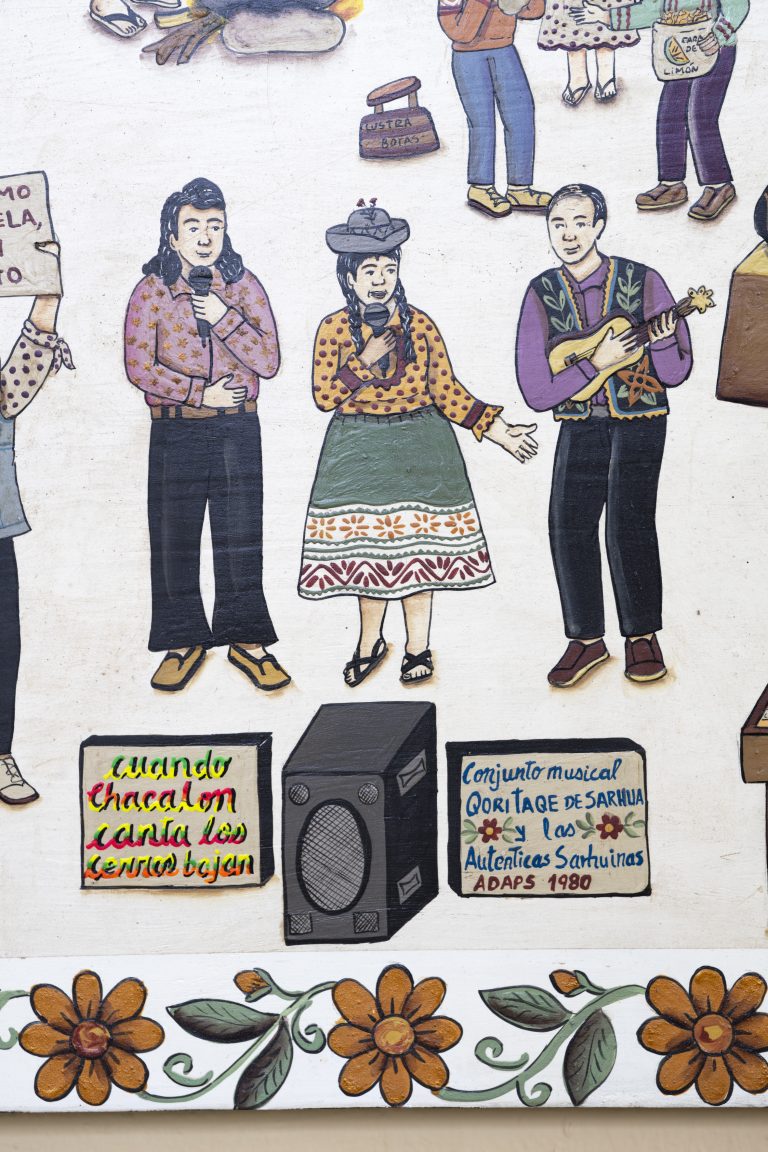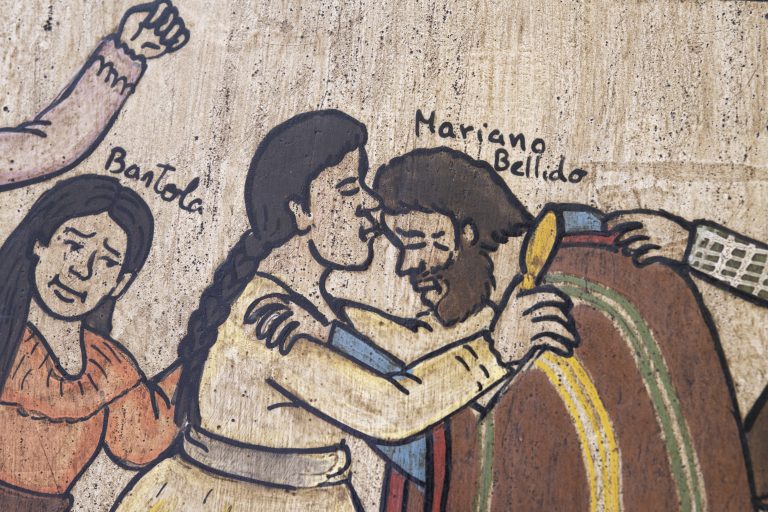Exhibitions
Violeta Quispe Yupari – “Artemanta Historiata Tapuspa”
Reception: November 4th, 6 - 9 pm
_VIGILGONZALES Cusco - Pampa del Castillo 455, Centro Histórico de Cusco
Official history is usually told from the perspective of power groups, which have determined which aspects of the past to show and how to show them, which stories are remembered and who are considered important within these stories. Art has also traditionally served to reinforce these perspectives from the visual. In this context, the histories of indigenous, mestizo and Afro-descendant women and sexual minorities have generally been neglected. The work of Violeta Quispe Yupari (Lima, 1989) has focused on demanding women's equality and denouncing gender violence, especially against Andean women. From this perspective, some of her works, like the ones we see in this exhibition, have focused on different historical contexts to highlight the stories and contributions of women in the construction of the Peruvian nation, especially those belonging to marginalized groups in terms of race, class and gender.
The Tablas de Sarhua are paintings on long wooden planks that are made on the occasion of the construction of a new house to record, through images and texts, the close relatives of the owners of the house and the ties of reciprocity that are established with the compadres who give the Tabla. Since the 1960s, due to the economic crisis, many Sarhuinos had to migrate to the big cities of Peru, especially to the capital, Lima; and in the 1970s, some of them began to paint a new version of the Tablas for the urban market. In the new Tablas, of rectangular formats, the painters depicted scenes of rural life in the Sarhua community, such as festivals and rituals, communal work, agricultural and livestock work, myths and stories. Since the 1990s, Sarhuin painters decided to also address the social conflicts that afflicted the community and created series in which they tackled issues such as the internal war and the life of migrants in Lima.
The paintings that are part of this exhibition have been produced in the last two years (2021-2023) and in them we can appreciate how her interest in highlighting the figure of Andean women and the struggle for women's rights lead her to question Peruvian history built from a patriarchal viewpoint. Her perspective intertwines different historical times with her personal history and experiences; she also intertwines the regional history of Ayacucho with social issues in the city of Lima, thus referring to her hybrid identity defined by both her parents' homeland and the city where she was born and grew up.
Violeta Quispe uses the techniques and figurative style of the Tablas to represent a history of Peru from the experiences of racialized women and thus protest against gender discrimination and violence. In doing so, she questions conventional representations of Peruvian history and inserts other bodies and experiences into them, but also deconstructs a number of established perspectives from dominant groups on racialized bodies and depicts strong and empowered Andean women. As María Lugones' decolonial feminism proposes, Violeta responds to the hegemonic discourse, not only in terms of class and race, but also of gender. Finally, it is worth highlighting how Violeta is challenging the patriarchal social order from her particular experience as an Andean woman, daughter of migrants in Lima, and from there she is contributing to reshape contemporary Peruvian art.
Text by Doctor of Philosophy Gabriela German (Ph.D)
Artist:
Violeta Quispe Yupari



















